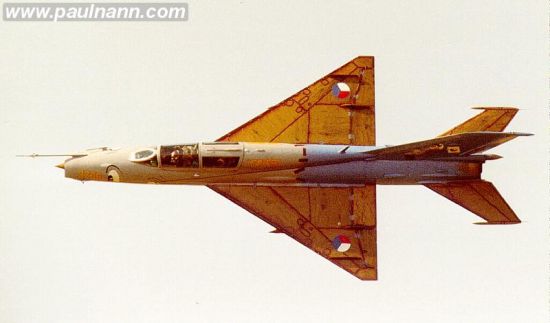|
||||||||||
|
|
||||||||||
|
||||||||||
|
|
||||||||||

However, you have the terms 2D and 3D reversed. A 2D wing is the same as an infinite wing while a 3D wing is a finite wing. We call a finite wing "3D" because the air is able to travel up and around the wingtip to produce trailing vortices. The flow around a 2D wing is not able to move in this third dimension. This situation is not possible on a real aircraft since one cannot build an infinite wing. However, an airfoil section tested in a wind tunnel is a 2D wing because the walls of the tunnel prevent the flow from being able to travel around the tips. An example of a 2D wing being tested in a wind tunnel is shown below. In this case, the wing is mounted vertically so that the floor and ceiling prevent the air from being able to flow around the tips.

Aerodynamically, the effect of trailing vortices reduces the slope of the coefficient of lift vs. angle of attack curve. The lower the aspect ratio of the wing, the more the lift-curve slope is reduced. This behavior results from the fact that the trailing vortices are able to influence a larger portion of the wing the smaller the wingspan becomes. The ideal lift curve slope of any 2D wing is 2π. If you look at wind tunnel data for any airfoil shape, you'll see that the slope of the lift curve is indeed very close to this value. As aspect ratio decreases, however, the lift curve slope becomes less than 2π which reduces the overall lift that the wing can produce. You can learn more about this behavior in an article about estimating the lift coefficient.
The reasoning above explains why commercial airliners like the Boeing 747 and other long-range aircraft like the B-52 Stratofortress bomber have very long, slender wings. These wings have a high aspect ratio that reduces the effect of trailing vortices and maintains a high lift curve slope. Such a wing is more aerodynamically efficient and allows the plane to maximize its range.

By contrast, most fighters like the F-16 Fighting Falcon or MiG-21 have very short, stubby wings. These aircraft need to be very fast and maneuverable, which requires low aspect ratio wings. The drawback of this design is that such planes typically have a very short range.

You can see the effect of aspect ratio on the lift produced by a wing quite clearly in the following graph.

Related Topics:
Read More Articles:


|
Aircraft | Design | Ask Us | Shop | Search |

|
|
| About Us | Contact Us | Copyright © 1997- | |||
|
|
|||